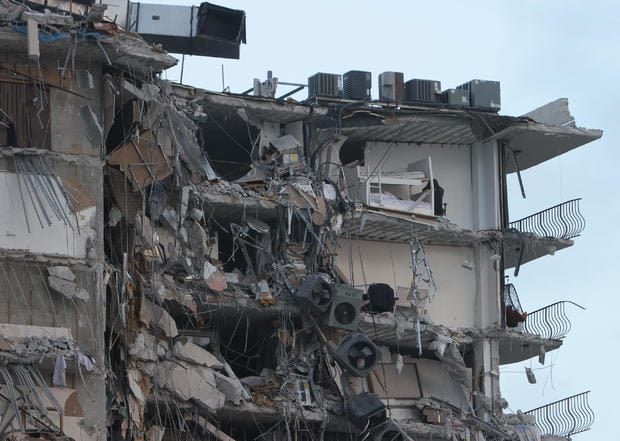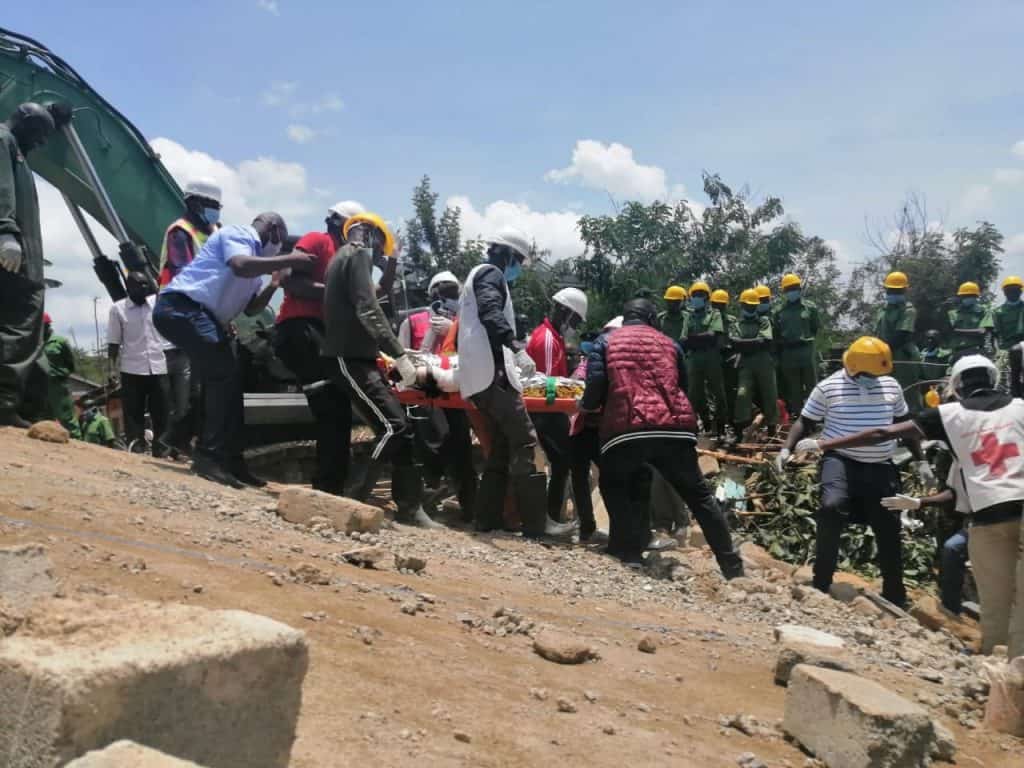On June 21st, a partially collapsed building in Kamukunji caught the attention of Kenyans after another building collapsed early this year in Nyamira county allegedly trapping scores of people under the rubbles. Photos shared online showed the top four floors of the building piled on each other. The detail on the cause remains scanty as the investigations go on.
Around the same time, a Condo collapsed in Florida, USA, killing at least 94 people and injuries more, according to NBC News reports. according to BBC, “Experts gathering information at the scene will have to consider a range of possible causes – from structural defects to environmental influences – and whether a combination of factors may have triggered the sudden collapse of the 40-year-old block.” However a 2018 structural inspection had identified “major structural errors” with reports stating that it got worse since then.
Case of building collapse around the world
There have been numerous incidences of structural failures and building collapses in the past. The collapse of the Sampoong department store in South Korea, which is perceived to be the “largest peacetime disaster in South Korean history,” according to Wikipedia, killed 502 people and injuring 937 others.
Also, there is a case of a school building collapsing in Nigeria allegedly trapping more than 100 children. There is the case of the Katowice trade hall roof collapse in Poland, leaving more than 60 people dead.
These cases demonstrate that building failure and collapse is not only a Kenyan problem but a global phenomenon. Knowing the causes will impact knowledge, help respective industries act accordingly and reflect on finding solutions to avoid future structural failures.

Florida Condo Collapse in the USA 
Kamukunji Building partially collapse in Kenya 
Rescue operations during the Nigeria School building collapsed a few years ago.
Cases of building collapse in Kenya
On 2015 January 4th, a residential building collapsed in Huruma, Nairobi, killing at least 52 people and injuring others. The cause of the collapse, according to the administrative justice investigation commission, was poor workmanship, poor building techniques, and poor structural design.
Another incident involved a building under construction that collapsed in the Laiser Hill area. Again, after investigation, structural design problems, poor workmanship, and poor concrete mix were to blame for the building failure. In Kisumu city, a building collapsed and a score of people, most of them day labourers, were the victims.
According to NCA, “In an audit carried out in 2018 by the National Building Inspectorate covering 14, 895 buildings revealed that 723 are extremely dangerous 10,791 are unsafe, 1217 are fair, and 2194 are safe. These unsafe and dangerous buildings eventually collapse.” Indeed, there are loopholes in the construction sector. Addressing the loopholes on multiple levels should be a priority.
Reasons for building Collapse
Improper foundation work
The most common reason for a building is a weak foundation. Even when you have a sound structure design, the foundation beneath may be incapable of holding or carrying the load above it. Buildings and their foundations can withstand static and temporary loads. Sometimes it can even withstand the horizontal force of wind or earthquake.
Overloading
Overloading is another common cause of building collapse. Self-weight in a building is nothing more than the self-weight of the building and the weight of other stationary objects accommodated in the building.
For example, the weight of a vehicle parked in the basement is the dynamic load imposed on the building foundation. There are also people living in these buildings and various other non-stationary objects, taking into account the building code of practice.
Unassessed structures changes or changes in occupancy rates lead can to structural failure. When planning a building, the design load range of the building should be higher than the actual load range. Therefore, designing structures according to these guidelines should not exhibit structural failure in the future.
Many buildings today fail because of durability and usability. Stability refers to its ability to withstand various loads, displacements and deflections that may lead to the building collapse. Sustainability depends on different factors, such as the building type and load distribution, the shape, size, and materials used in the building.
Lack of maintenance
Lack of maintenance creates problems before they become catastrophic. Proper maintenance prevents deterioration or corrosion, which makes the building more durable and safer. Proper maintenance may include regular building inspections to identify deteriorated elements. It also means issues are addressed correctly and promptly.
Substandard materials
Section 32 of the Kenya building code states, “No person shall use or permit or cause to be used in the erection of a building any material which is not – (a) of a suitable nature and quality for the purpose for which it is used, (b) adequately mixed or prepared, (c) applied, used or fixed properly to adequately to perform the functions for which it is designed”.
Poor workmanship
The contractor should be able to follow proper standards during construction. For example, contractors should use material correctly, install products properly, follow building code guidelines to the core and consider proper concrete compaction. Failure to follow these guidelines leads to cracks in the foundation and weak structures, among others.
Conclusion
In conclusion, today’s building failures and the after-effects are something we should learn from. We should strive to learn from the mistakes instead of waiting to make the same mistakes. Intelligently designed buildings with meticulously designed foundations, and proper workmanship, use of quality material, and regular maintenance reduces the risk of failure and increases the building performance.

